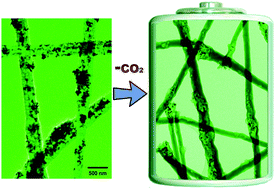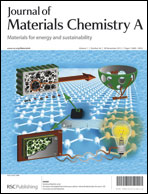A simple method to encapsulate SnSb nanoparticles into hollow carbon nanofibers with superior lithium-ion storage capability
Abstract
The practical use of high-capacity anodes in lithium-ion batteries generally suffers from significant volume changes upon lithium insertion and extraction. The volume changes induce cracks and loss of inter-particle electronic contact in the electrode, resulting in rapid capacity decay. The use of fiber-like materials to prevent cracks and accommodate volume changes is widely observed in many animal and human activities. Birds mix grass and feathers into mud to build nests, and humans in ancient times blended straw with mud to produce adobe bricks for housing construction. In view of this point, this research designed a porous nanofiber structure to resolve the unstable structure problem of anode materials. The three-dimensional network structure composed of nanofibers provides a highly elastic matrix to accommodate the volume changes of high-capacity Sn and Sb particles and pores around the active particles, induced by CO2 evolution, serve as an additional buffer zone for the volume changes. This unique structure prepared by using a new SnSb alloy precursor and a simple electrospinning technique leads to excellent lithium storage performance in terms of energy density, cycling stability, and rate capability.


 Please wait while we load your content...
Please wait while we load your content...